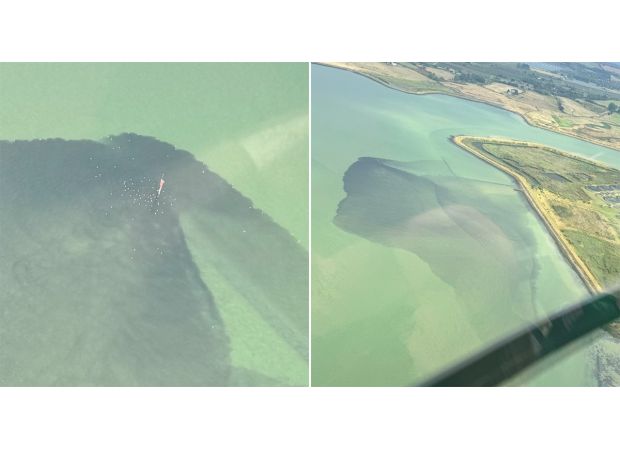Birds were observed eating sewage entering a river in the UK.
The situation was rather gloomy.

Last year, a water treatment facility located near the Medway estuary was found to have released untreated sewage for a period of almost 328 hours. This discovery caused great concern, especially when it was reported that hundreds of liters of raw sewage were seen flowing into a river next to a nature reserve in Kent. It was helicopter pilot Mark Hutley, 54, who first noticed the seagulls feeding on the brown liquid leaking into the estuary while he was flying over Gillingham on Sunday. In an interview, Mark described the scene as "massive" and "pretty gross", admitting that it was quite depressing to witness.
Mark even asked his passenger to take photos through the helicopter's window to capture the deluge on the shoreline. He was shocked by the stillness of the water, which made the sewage spillage even more visible. As someone who has been flying for 30 years, Mark had never seen anything like it before. The sewage was released from a storm overflow at the Motney Hill waste water treatment works, which is operated by Southern Water and is located next to a nature reserve. According to data compiled by The Rivers Trust, the sewage was released into the water 82 times, for a total of nearly 328 hours, in the past year. This means that on average, the overflow occurred for four hours each time.
It is worth noting that storm overflows are designed to prevent flooding by releasing sewage and excess water from public sewers during heavy rain. However, the increased frequency of these overflows has raised concerns about the safety of wildlife and waterways. The Rivers Trust has highlighted the state of our vital waterways and the range of pollutants that are causing harm. They compare these pollutants to different colored threads that are tightly intertwined, creating a complicated and depressing picture.
After the images of the sewage spillage were shared on social media, Metro reached out to Southern Water for a statement. Similarly, a dark mass spotted by Mark off Southend's Chalkwell Beach, where his children swim, also caused concern. However, it was later confirmed that this was not sewage, but rather stirred-up silt. This was clarified by Anglian Water, which has an outfall in that area for surface water drainage. They explained that the discoloration was caused by the heavy rain and the disturbance of silt and mud, and not sewage.
The water company stated that their system is designed to prevent homes and businesses from flooding, and it is not uncommon to see discharges during periods of heavy rain. They also confirmed that the Environment Agency and the local council did not find any evidence of sewage discharges or debris in the area. Councillor Daniel Cowan, the Leader of Southend Council, reassured the public that the discolored water was from a surface water outflow triggered by heavy rain. He also emphasized that this was a modern surface water pipe, which does not contain any sewage and should not affect water bathing quality. The council takes pride in the quality of their beaches, which are regularly monitored by the Environment Agency and have been found to have good water quality according to strict international standards.






